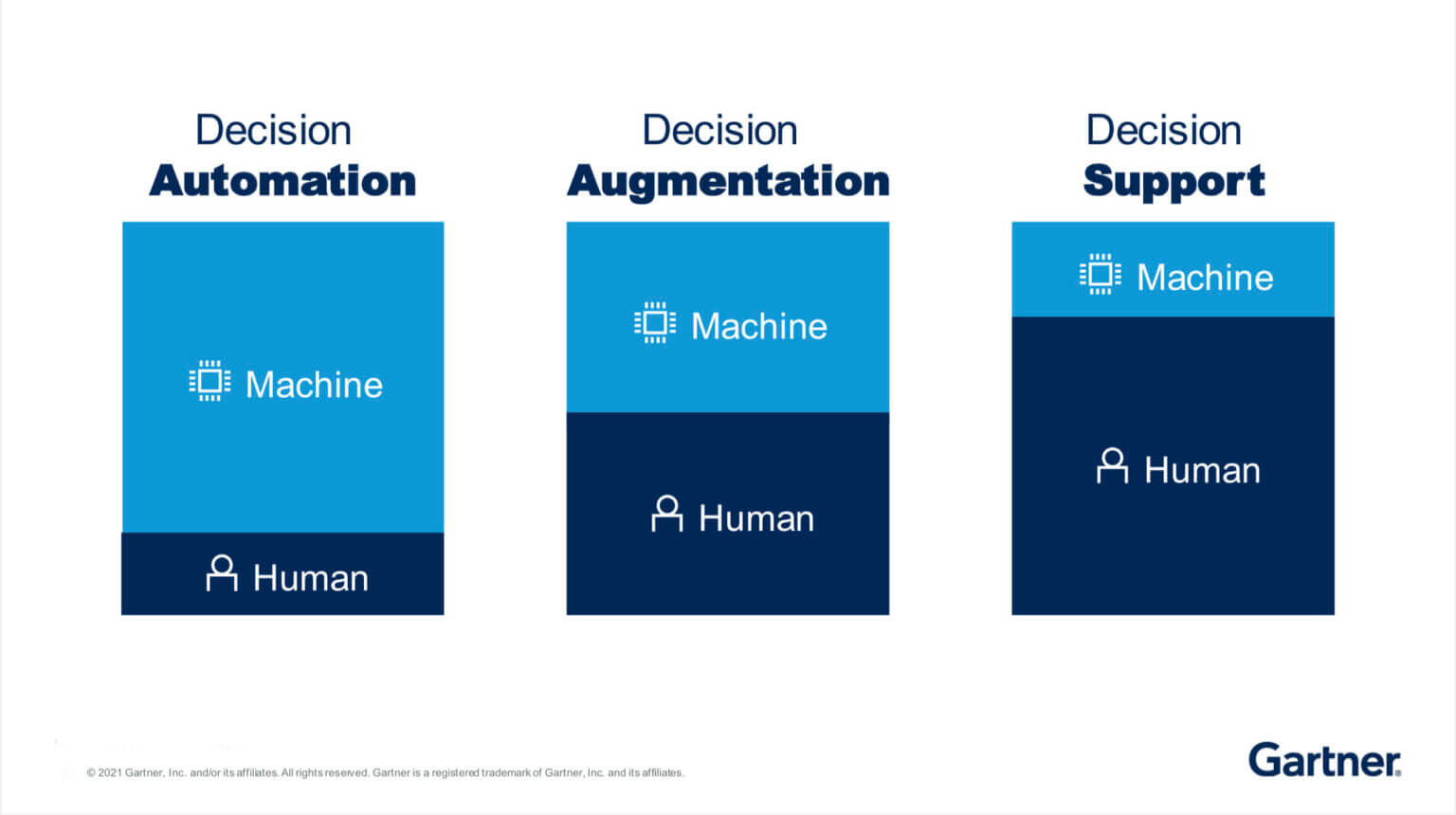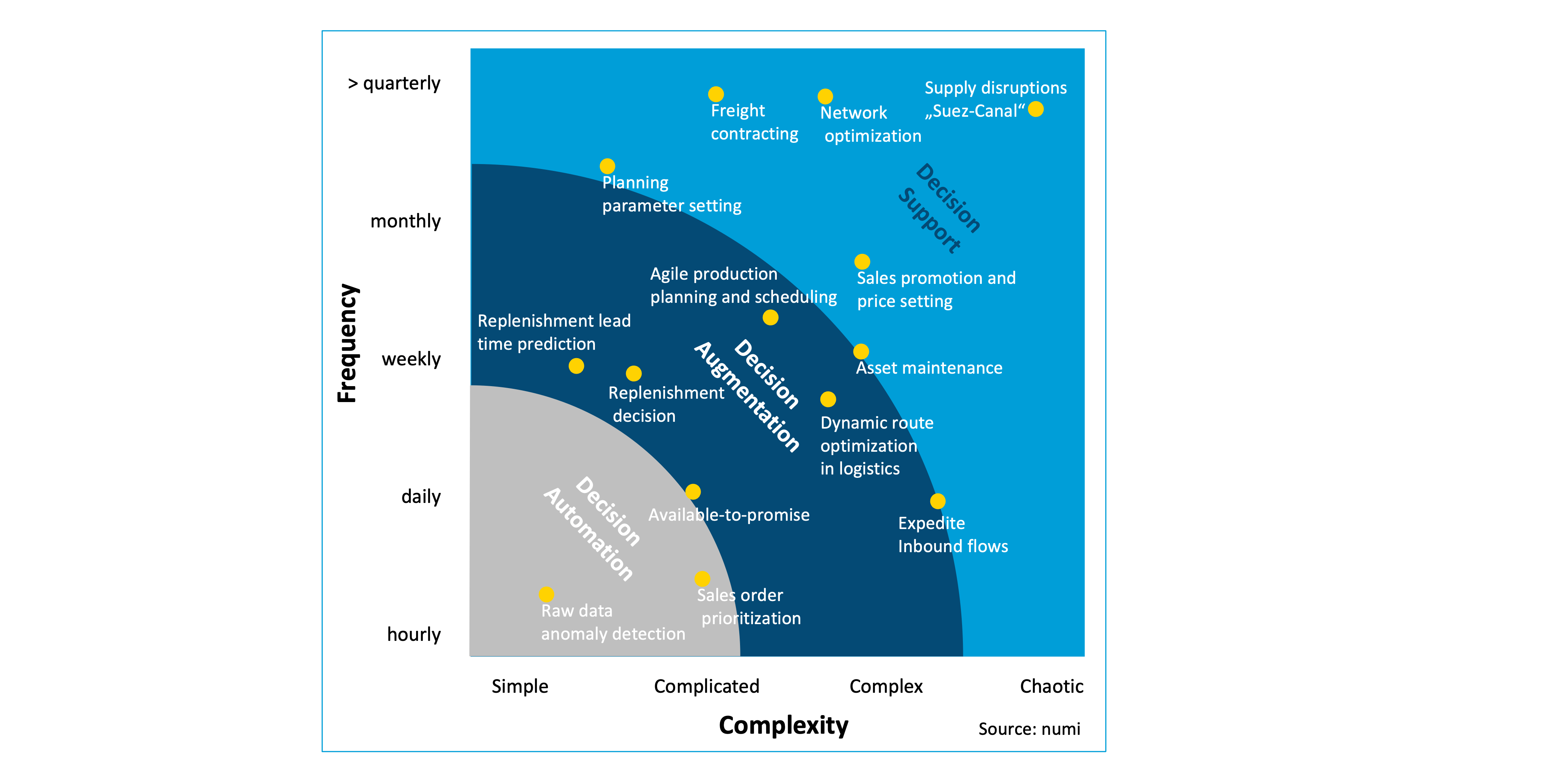
Would you let AI make your inventory decision?

Stefan Gaubatz
18 Jan 2022
It’s estimated that we make 35.000 decisions every day¹. Some of these decisions are already automated, like putting suspicious emails in your spam inbox or ringing alarm bells in case of fires; others, like self-driving cars, might take some more years until we fully trust them.
Also, in the supply chain, the burning question remains as to how far technology can be trusted when it comes to “the last mile,” the final decision fully automated by Artificial Intelligence. Machine Learning, as a branch of AI, is nowadays a widely used field in supply chain management. Future demand prediction, customer segmentation, or anomaly detections are typical use cases. These problems are usually solved with supervised regression or classification algorithms where for example gradient boosting algorithms shine².
But how does it look if you want to automate sequential supply chain decisions? There are many great examples of automated decisions where AI outperforms humans, like playing chess, image recognition, or lip reading. But in supply chain management, human judgment often overrides system-generated recommendations. Lack of clean and big data, missing cross-functional interdependencies in the model setup and low trust in black-box algorithms are just a few reasons for that³.
Most supply chain decisions are business-critical decisions. Therefore, it’s crucial to find the right approach to digitized decisions, which fits into the company culture, data, and the decision process.
Decisions with right degree technology
Decision systems can range from decision support to fully automated decision systems. Gartner recently proposed a useful classification of the degree to which AI and Analytics are used in the decision-making process and defined three types. Decision support, decision augmentation, and decisions automation.

- Decision automation. The system makes the decision using prescriptive analytics or predictive analytics. Its benefits include speed, scalability, and consistency of decision-making.
- Decision augmentation. The system recommends a decision, or multiple decision alternatives, to human actors using prescriptive or predictive analytics. Its benefits lie in the synergy between human knowledge and the capability of AI to analyze high volumes of data rapidly and deal with complexity.
- Decision support. Human employees make decisions supported by descriptive, diagnostic, or predictive analytics. Its main benefit lies in the combined application of data-driven insights and human knowledge, expertise, and common sense, including “gut feel” and emotions.
An example of an automated supply chain decision can be intelligent sales order prioritization in allocation situations.
One example of decision augmentation can be creating supply chain plans, including scenario simulations.
A decision support example in the supply chain field is identifying high failure rates for spare parts in a bill-of-material where expert knowledge in terms of the ability to supply and failure risk is required.
Assessing supply chain decisions
To select which supply chain decision should be supported, augmented, or automated, typical supply chain decisions can be assessed against two criteria: Frequency and complexity of the decision.
Frequency is defined as the time intervals between two decisions—the higher the frequency, the higher the urgency of automating the process. A good example here is data anomaly detection in daily data imports. On the other side, supply chain budgeting is a yearly or maximum quarterly exercise, where intense automation efforts might not be worth the implementation efforts.
Complexity can be defined with the Cynefin framework. We could classify the decisions as:
- Simple, which boil down to a clear cause and effect relationship, with limited solution space, constraints, and cause, and effects
- Complicated, which require expertise or analysis to identify cause and effect,
- Complex, which involves multiple relationships and interdependencies,
- Chaotic, which has unknown causes and effects, with unclear or dynamic interdependencies.
Some supply chain decision-making processes are shown on the chart below.

Other aspects like data quality and availability, decision processing time and business impact need to play a role in the assessment as well. These considerations should be explored before supply chain digitization initiatives are launched.
Now let’s look at specific decisions, and back to our initial question, would you let AI make your inventory decision?
AI for inventory decisions
Ordering the right amount of raw materials or products at the right time and location has a long history in the supply chain software world. First Material-Requirement-Plans were already supported by computers in the 1960s. It has evolved over time, and new concepts like MRP2, Advanced-Planning-Systems, and Demand Driven MRP have arisen. So there have always been decision support systems for inventory decisions. But to fully automate the replenishment of raw materials or finished goods, many constraints, predictions, and targets need to be considered.
- Constraints like the shelf life of a product, current raw material prices, or warehouse capacities.
- Future scenarios like the product forecast, expected supplier lead times, or future selling prices must be incorporated into the decision process.
- Company targets might vary per product as well - optimizing product availability, reducing inventory holding and logistics expediting costs, reducing CO2 emissions per purchase orders, or all goals at together with a total cost of ownership approach.
That’s why classical ERP systems or APS fail to augment this inventory decision by intelligent recommendations and manual analysis is required to achieve the inventory goals. Also, supervised Machine Learning models have some disadvantages when it comes to sequential decision-making. They violate causality and need a lot of clean data as a starting point or fail to predict and decide for multiple time steps in longer planning horizon scenarios.
On the other side, Reinforcement Learning has overcome these obstacles and has shown promising results in automating human decisions at scale in other areas. For example, robo advisors for investment decisions, chatbots, or news recommendations. RL is now entering the field of supply chain optimization and automation as well.
Reinforcement learning is an area of machine learning that focuses on sequential decision-making. It determines how to take actions in an environment to maximize some reward. In inventory optimization, a simple action can be ordered up to a specific inventory level, but also initiate sales promotions to reduce inventory or expedite inbound flows can be predefined actions. In other words, the RL algorithms tell you what to do (e.g. order products) to optimize your business goals (e.g. reduce lost sales) in a specific situation. The situation is defined as states of your environment (e.g. warehouse or product) and sensors (e.g. future demand, future inventory levels or replenishment lead times).

Setting up an RL model needs to consider industry or even company specifics like shelf-life constraints in the food and beverage industry or raw material price fluctuations for metal retailers. Therefore, it requires deep human domain expertise in the implementation process. Another aspect is the validation of the outcomes. Replenishment decisions are made weekly or even daily. Therefore, setting up a simulation environment is crucial to regularly validate the decision policy in a closed loop simulation environment to avoid lengthy and expensive validation cycles with real-world data.
numi’s approach for business-critical supply chain decisions, like the inventory decision, is that supply chains run best when humans and technology augment each other. So numi recommends a particular action that needs to be reviewed by the expert before the decision is pushed pack into execution systems. Therefore, we provide all relevant insights and simulations that can be done to make well-founded decisions. On the other hand, experts need to deliver business-specific inputs when supply chain algorithms are set up.
If you would like to learn more about our solution, feel free to request a demo.
Sources:
- http://science.unctv.org/content/reportersblog/choices
- https://www.kaggle.com/kashnitsky/topic-10-gradient-boosting
- https://www.supplychainbrain.com/blogs/1-think-tank/post/30051-six-barriers-to-getting-results-with-ai-in-supply-chain-management
- https://www.gartner.com/smarterwithgartner/would-you-let-artificial-intelligence-make-your-pay-decisions